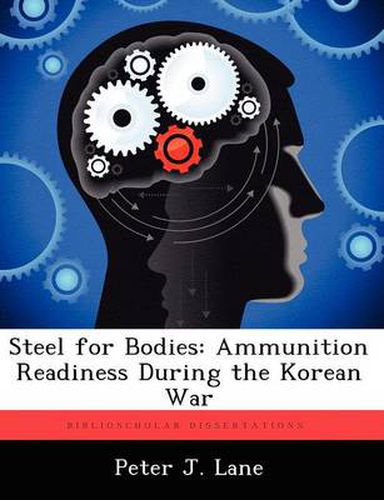Readings Newsletter
Become a Readings Member to make your shopping experience even easier.
Sign in or sign up for free!
You’re not far away from qualifying for FREE standard shipping within Australia
You’ve qualified for FREE standard shipping within Australia
The cart is loading…






This title is printed to order. This book may have been self-published. If so, we cannot guarantee the quality of the content. In the main most books will have gone through the editing process however some may not. We therefore suggest that you be aware of this before ordering this book. If in doubt check either the author or publisher’s details as we are unable to accept any returns unless they are faulty. Please contact us if you have any questions.
A nation’s ability to wage war is largely shaped by the preparations that it has undertaken in the period since the last war it has waged. The policies that support preparation for the next war are often forced to compete for resources against other domestic programs. Deficiencies in the U.S. Army’s ammunition readiness during the Korean War are illustrative of the many challenges faced in resourcing readiness in the face of competing domestic and military priorities . The U.S. Army’s readiness for battle at the beginning of the Cold War was closely linked to reliance on a strategy of mobilization, which proved itself ill suited to respond to the needs of the nation’s strategy to contain the growth of Communism. Military leaders struggled to develop a joint strategy to meet the Soviet threat, and to secure presidential support to resource a military establishment that was ready and capable of fighting the next war. Securing presidential support for increased funding was complicated by divisions between military services exacerbated by the National Security Act of 1947, different perceptions of the nature of the Soviet threat, and domestic political pressures to limit defense spending.
$9.00 standard shipping within Australia
FREE standard shipping within Australia for orders over $100.00
Express & International shipping calculated at checkout
This title is printed to order. This book may have been self-published. If so, we cannot guarantee the quality of the content. In the main most books will have gone through the editing process however some may not. We therefore suggest that you be aware of this before ordering this book. If in doubt check either the author or publisher’s details as we are unable to accept any returns unless they are faulty. Please contact us if you have any questions.
A nation’s ability to wage war is largely shaped by the preparations that it has undertaken in the period since the last war it has waged. The policies that support preparation for the next war are often forced to compete for resources against other domestic programs. Deficiencies in the U.S. Army’s ammunition readiness during the Korean War are illustrative of the many challenges faced in resourcing readiness in the face of competing domestic and military priorities . The U.S. Army’s readiness for battle at the beginning of the Cold War was closely linked to reliance on a strategy of mobilization, which proved itself ill suited to respond to the needs of the nation’s strategy to contain the growth of Communism. Military leaders struggled to develop a joint strategy to meet the Soviet threat, and to secure presidential support to resource a military establishment that was ready and capable of fighting the next war. Securing presidential support for increased funding was complicated by divisions between military services exacerbated by the National Security Act of 1947, different perceptions of the nature of the Soviet threat, and domestic political pressures to limit defense spending.